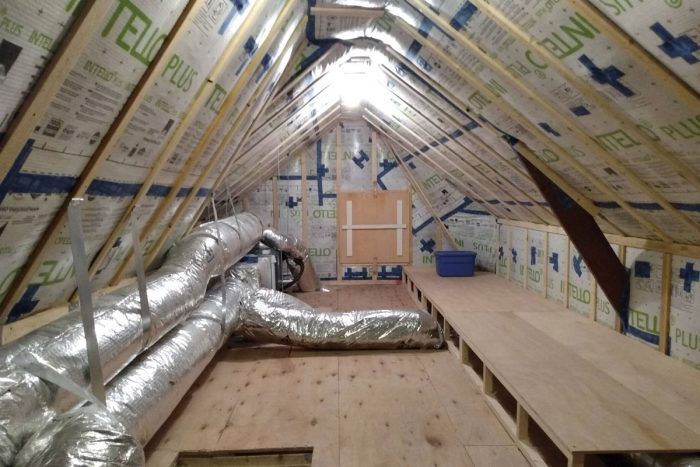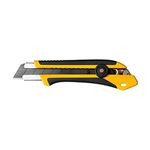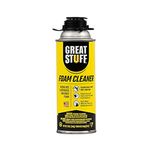The End of Deep Energy Retrofits?
Learn why one design-build remodeling firm stopped doing these types of renovations in favor of other efficiency improvements and upgrades.

Back in the late aughts, my design-build remodeling firm, Byggmeister, staked its reputation and identity on deep energy retrofits (DERs), a strategy for dramatically reducing energy use of existing homes by wrapping them in thick layers of “outsulation” and meticulously air-sealing them. We’d been working at improving home-energy performance for decades, and we saw tremendous potential in this strategy to achieve deep reductions in the carbon emissions of existing homes.
We were wrong. We did our last DER in 2017, and now we routinely talk people out of them. In the intervening years, it seems that DERs have only become more popular, at least in concept, and Byggmeister is still widely known as a DER firm, which puts us in the awkward position of arguing against an approach we helped pioneer. How did we go from DER evangelists to skeptics?
We first learned about DERs just as the enormity of the climate crisis was coming into focus. We had already been quantifying the impact of our work for a few years, measuring each project’s energy use before and after our upgrades. The results were underwhelming. On some projects, we were achieving modest energy savings of maybe 20% to 40%. On others, we were making no dent. On still others, we were making matters worse. We realized that if we were going to do our part to cut energy use and carbon emissions from existing buildings, we would have to change course.
The first change we made was deciding that we wouldn’t add on to a home without first exploring whether we could meet the client’s functional goals within the home’s existing footprint. Now, when we get an inquiry for an addition, we let homeowners know that it’s often more economical and environmental to reconfigure their existing space and put the money they would have spent on an addition toward improving performance. If the homeowner responds positively, we’ll move forward. Sometimes we even end up doing an addition. But we start from the premise that we can usually meet our clients’ needs without adding on, and now we do a lot fewer additions than we used to.
The second change we made was that we committed to improving energy performance on every project. Whereas before we would often allow a client’s interest to determine the energy scope, we began to conduct energy assessments of every home we worked on and recommend energy improvements as a matter of course. Now, if potential new clients don’t seem interested in saving energy, we know they aren’t a good fit for us.
While these were significant changes in our approach to remodeling, their impact seemed as though it might be too little, too late. That’s why the DER was initially so appealing.
In 2008, Massachusetts passed two pieces of groundbreaking legislation. The Global Warming Solutions Act and The Green Communities Act committed the state to aggressive goals for reducing greenhouse-gas emissions. Shortly thereafter, our electric utility, National Grid, announced a deep energy retrofit pilot program for single-family and small multifamily homes. National Grid’s program reimbursed eligible projects 75% of the cost up to a maximum incentive threshold. For single-family homes, the maximum ranged from $35,000 to $42,000 depending on the conditioned floor area. We jumped in with both feet.
Over the next few years we completed several DERs, aiming for the following prescriptive targets: R-10 basement floor, R-20 basement walls, R-40 above-grade walls, R-60 roof, R-5 windows, and air leakage of roughly 1 ACH50. Some of these were partial DERs in which we would focus on a part of the envelope, typically the roof. On all of our whole-house DERs, we typically upgraded mechanical equipment and installed solar PV.
The savings did not disappoint, with whole-building DERs achieving energy use reductions of 60% or more over baseline (we used actual utility-use data wherever possible to quantify savings; when we didn’t have this data, we relied on modeled usage). The homeowners were thrilled with their low utility bills and improved comfort. One bragged that he could comfortably walk around his home in his bare feet when it was 0°F outside.
Then just as interest in DERs was ramping up, we stopped doing them. We stopped for several reasons. The first was that Massachusetts ended the DER pilot program, and the utility money stopped flowing. At that point, the costs were too high. Homeowners who were initially very enthusiastic about reducing their energy use by 60%, 70%, or 80% were much less enthusiastic when we told them how much it could cost. Even for a house with relatively simple geometry, outsulating can be two to three times more expensive than insulating (for new construction the costs of going from code-level performance to high performance may be marginal, but this is never the case for retrofits). Of course, outsulation comes with improved performance, but without generous incentives we had a very hard time selling it.
At first we found this disappointing and hoped we could figure out a way to bring down the costs. Then we learned about embodied carbon, or the upfront carbon emitted during the initial stages of a material’s lifecycle. Of all insulation materials, foam plastics have the highest upfront emissions. Foam had been our go-to insulation material, which means that we had been burdening our DERs—projects whose primary purpose was to save energy and carbon—with extraordinary carbon debts. We briefly looked into doing DERs with carbon-storing materials such as wood fiberboard, but our estimates indicated that wood fiberboard DERs would be even more expensive than using foam.
In the meantime, improvements in heat-pump technology opened a new decarbonization pathway that didn’t rely on extreme envelope measures. When we first started doing DERs, only homes with very low heating loads could heat exclusively with heat pumps. Now that we have heat pumps that perform well in very low temperatures, we no longer need to wrap a home in thick layers of insulation and drop the air leakage to less than 1 ACH50 to go all-electric.
Improving efficiency is necessary but insufficient to address the climate crisis. We also need to electrify our energy use and decarbonize our energy supply. And we must do these things simultaneously in a very compressed timeframe if we hope to avoid the worst effects of climate change. We believe this means that we should stop doing DERs and instead couple modest upgrades in efficiency with heat pumps and solar (when appropriate).
While it’s true that a very low-energy home can get by with a much smaller and simpler heat-pump system than a thermally average home can, we have found that for most homes the cost/benefit analysis favors more modest efficiency improvements and larger heat-pump systems over DERs and smaller heat-pumps systems.
Over the past several years we have converted dozens of thermally average homes to heat pumps and have done partial conversions on many more. On the low end, energy use and carbon emissions are 15% to 20% less than preproject usage and emissions. On the high end, energy use and carbon emissions are 60% to 70% less.
Probably our most successful modest retrofit to date has been of a 1930s colonial. Except for minimal attic-floor insulation, this house was mostly uninsulated before we did our work. It also had an ancient boiler and water heater. We insulated the basement walls with 2 in. of closed-cell spray foam, dense-packed the wall cavities with cellulose, and insulated the underside of the roof with 3 in. of closed-cell spray foam followed by 7 in. of cellulose. With these measures, we reduced air leakage by 60%.
We also installed a ducted heat-pump system, a heat-pump water heater, and an induction cooktop. Operating carbon emissions went down by 70%, and because we minimized our use of foam and relied on cellulose wherever possible, the carbon storage of the cellulose offset the emissions of the foam, meaning that the envelope measures were carbon neutral.
Of course, most of our projects don’t achieve this level of savings because most homes start out more efficient than this one. But with this approach, I believe that we’ve been able to achieve greater reductions on many more homes than if we had continued our DERs.
That’s not to say that modest retrofits coupled with heat-pump conversions are without their challenges. In our experience, a heat-pump system often costs more to install than a new gas heating system. We’ve also learned the hard way that heat-pump systems must be designed and installed by knowledgeable and skilled tradespeople to perform well. There are too many poorly designed and installed heat pumps. And too many are put into homes that haven’t had modest efficiency upgrades, resulting in comfort complaints and increased utility costs. We’re also concerned about refrigerant leaks, having suffered a couple on our projects. And if widespread electrification isn’t coupled with load reduction, the potential for strain on the electric grid during peak heating days is also a significant concern.
Even with all these challenges, we think our approach is the best way for us to reduce household carbon emissions. We could be wrong, just as we think we were wrong about DERs. All we can do is stay abreast of current science and technology and be willing to change course if—or rather, when—we learn a better way.
Rachel White is CEO of Byggmeister, a design-build remodeling firm in Newton, Mass.
From Fine Homebuilding #314
RELATED STORIES
- Deep-Energy Retrofits versus Reductions
- Deep-Energy Retrofit Dropout
- The Many Benefits of Design-Build
Fine Homebuilding Recommended Products
Fine Homebuilding receives a commission for items purchased through links on this site, including Amazon Associates and other affiliate advertising programs.

Utility Knife

Caulking Gun

Great Stuff Foam Cleaner






View Comments
This is interesting and in line with where my thoughts have been converging while consuming info across the spectrum of positions. I'm not a builder. I'm a recent retiree who sold a conventionally stick built house and am renting until we find a long-term place to settle (favoring NH or ME at the moment). I want an efficient house, for both ethical and cost-control reasons. I see some sources citing a 10-to15% premium to build or buy (prefab) a super-efficient, environmentally green house. In the rare cases when articles report the actual costs, they tend to be upwards of $300/sf, not counting lot, lot prep, permits, utilities, etc. The final cost may be $400/sf and upward. That's not a price point enough people can afford to make a dent in overall emissions related to residences. With a budget greater than the average home buyer's, I no longer feel I can afford a Passive House or anything approaching its performance. I'm looking at Pretty Good House concepts. It's more doable but still not in the ballpark of 10-to-15% above standard construction, unless I'm ill informed. I think a 'shallow' or 'intermediate' retrofit or a new build with modern HVAC and insulation may be the best we can afford.